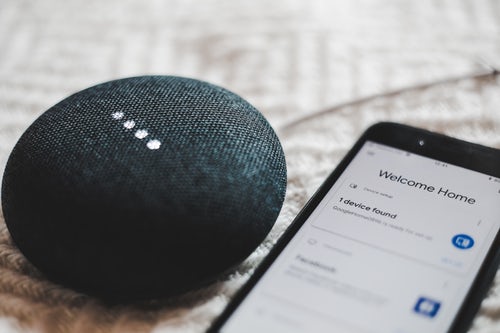
What is artificial intelligence (AI) going to do this year? The same thing it does every year, or course: try to take over your gadgets.
Much like the classic, beloved, ginger-haired Disney mermaid, smart assistants from Google and Amazon want to be where the people are – even when they aren’t at home. Luckily, these digital assistants won’t have to give up their voices to get their wish. If you’re feeling wary of AI, now is the time to finally pull the trigger on packing up and moving to the woods to get off the grid. Basically, run.
While some of us still remember Alexa’s first, failed attempt to go mobile – the Echo Tap – Amazon has put that experiment in the rear view mirror and refocused to add Alexa to stationary and mobile products that already exist from other brands. While Alexa is expanding rapidly and making lots of noise, the Google Home assistant isn’t far behind, either. Though Google was years behind Amazon to the market, it has caught up quickly and now seems to be keeping pace with partnerships and integrations that are expanding the AI assistant space.
While the use of smart home assistants is still breaking through commercially, Amazon and Google are banking on adoption picking up a lot of speed in the next few years as technology continues to evolve at a surprising pace.
Amazon has made it easier than ever for people to use Alexa with the recent announcements of an Alexa Mobile Accessory Kit. This new release will help the developers of products like wearable tech and headphones – the things that we use every day when we are away from our homes.
While there is still a learning curve for digital assistant users, even as they interact more with the original, dedicated devices, there is a lot of buzz around how this AI can help enhance the way that people use their everyday devices. And, of course, having a single, integrated assistant means that your life can be completely synced.
Google and Amazon are both also actively integrating into one of our favorite pastimes: watching television. With remote controls getting smaller, with less buttons, voice searching is here to save the day and to make entertainment easier than ever. Big electronic names like LG used the Consumer Electronics Show to announce that you’ll be able to talk to their televisions using Google and Amazon assistants. These televisions will have their own deep learning capabilities – ThinQ AI – but will also connect with voice-control digital assistants to pick up any slack. You’ll be able to use the combined power of LG’s built-in AI with smart assistants to do things like search for TV shows, change the TV volume, and control playback, as well as interact with connect devices to do things like order take out or set the right mood by turning your smart lights up or down. Digital Assistants already have various uses in the entertainment field, just check out 5 Ways People Use Digital Home Assistants for Entertainment to see just a few.
There’s no denying it: the future is going to be smart and ruled by voice-control.




